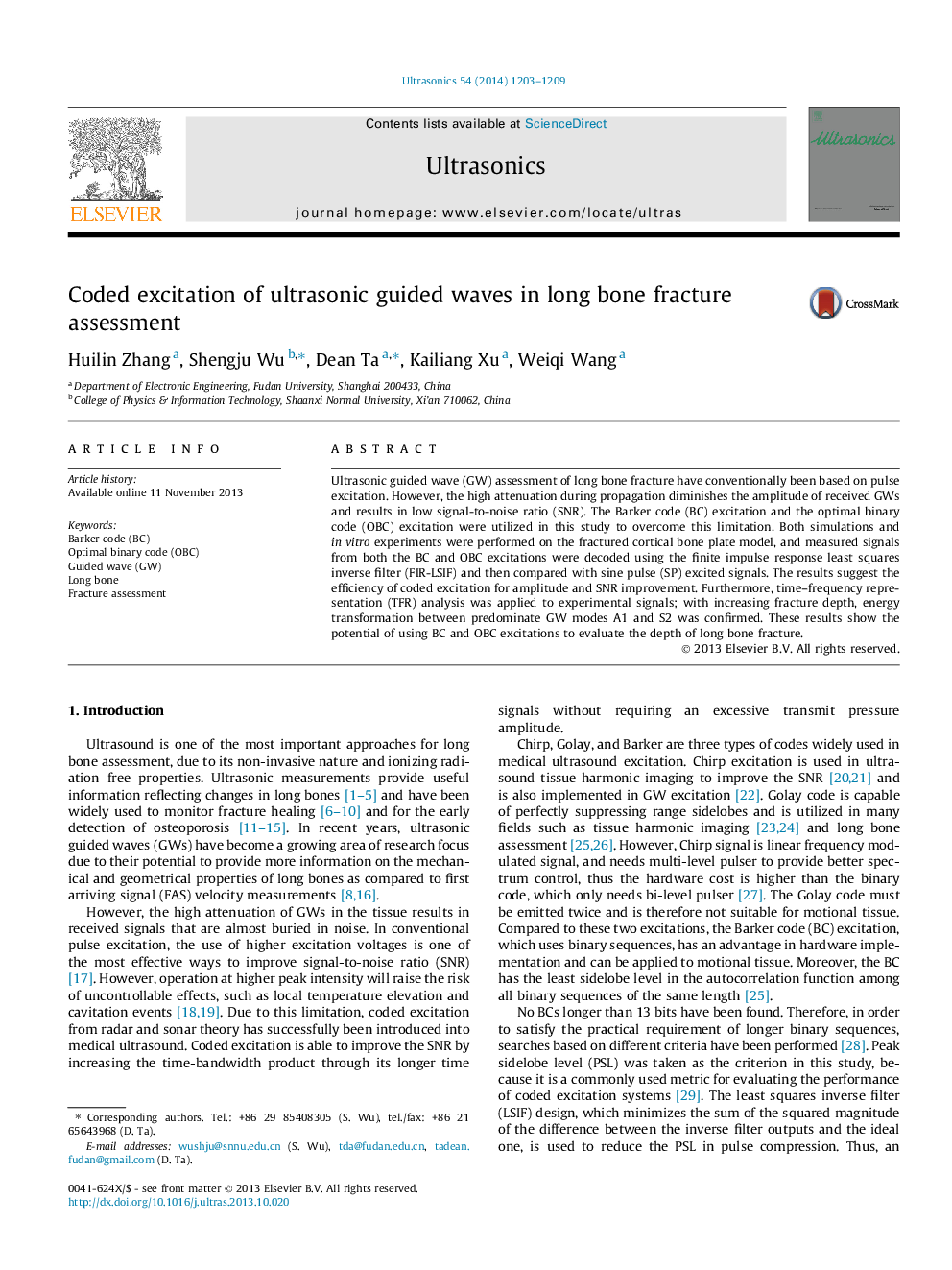| Article ID | Journal | Published Year | Pages | File Type |
|---|---|---|---|---|
| 10690526 | Ultrasonics | 2014 | 7 Pages |
Abstract
Ultrasonic guided wave (GW) assessment of long bone fracture have conventionally been based on pulse excitation. However, the high attenuation during propagation diminishes the amplitude of received GWs and results in low signal-to-noise ratio (SNR). The Barker code (BC) excitation and the optimal binary code (OBC) excitation were utilized in this study to overcome this limitation. Both simulations and in vitro experiments were performed on the fractured cortical bone plate model, and measured signals from both the BC and OBC excitations were decoded using the finite impulse response least squares inverse filter (FIR-LSIF) and then compared with sine pulse (SP) excited signals. The results suggest the efficiency of coded excitation for amplitude and SNR improvement. Furthermore, time-frequency representation (TFR) analysis was applied to experimental signals; with increasing fracture depth, energy transformation between predominate GW modes A1 and S2 was confirmed. These results show the potential of using BC and OBC excitations to evaluate the depth of long bone fracture.
Keywords
Related Topics
Physical Sciences and Engineering
Physics and Astronomy
Acoustics and Ultrasonics
Authors
Huilin Zhang, Shengju Wu, Dean Ta, Kailiang Xu, Weiqi Wang,
